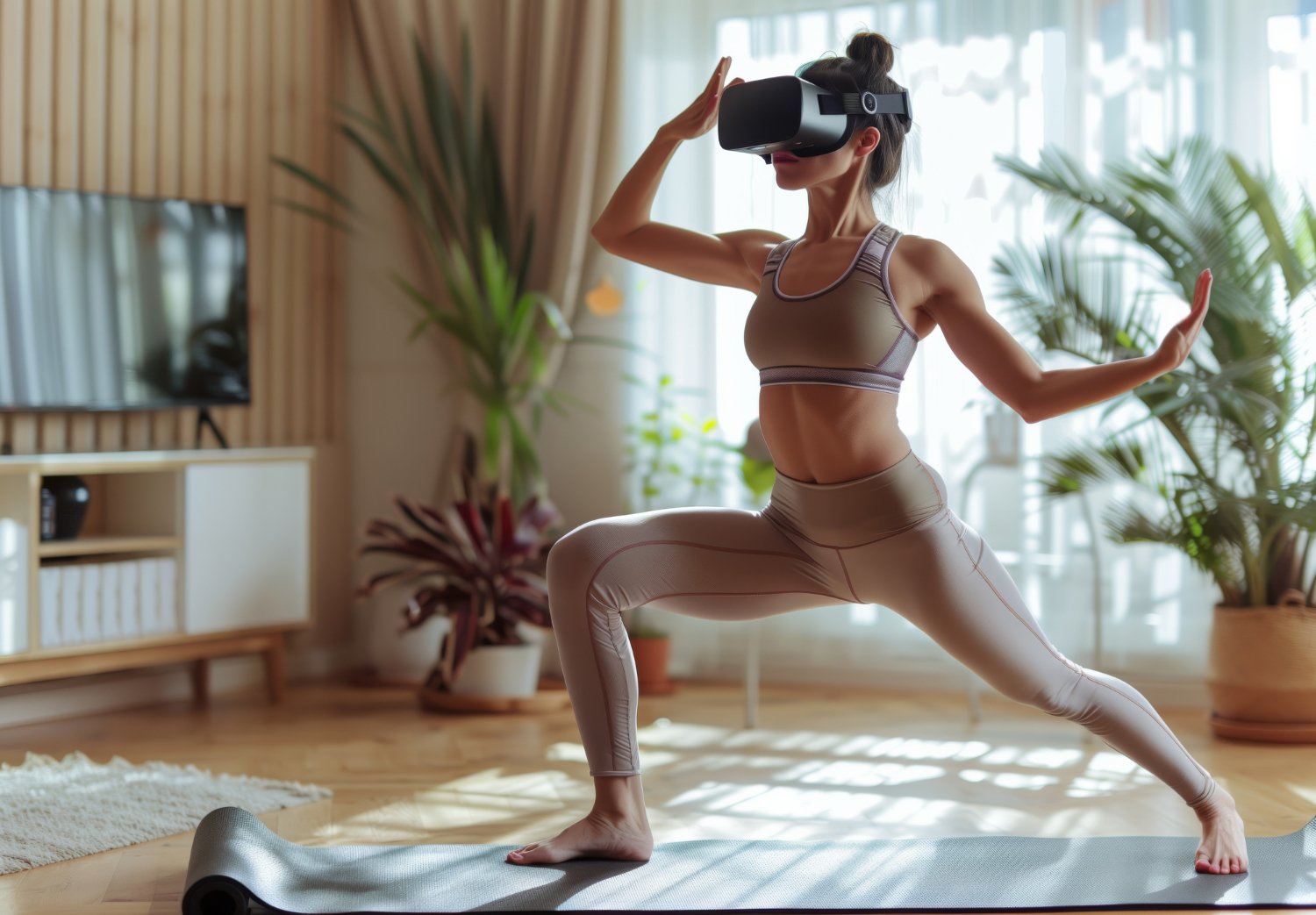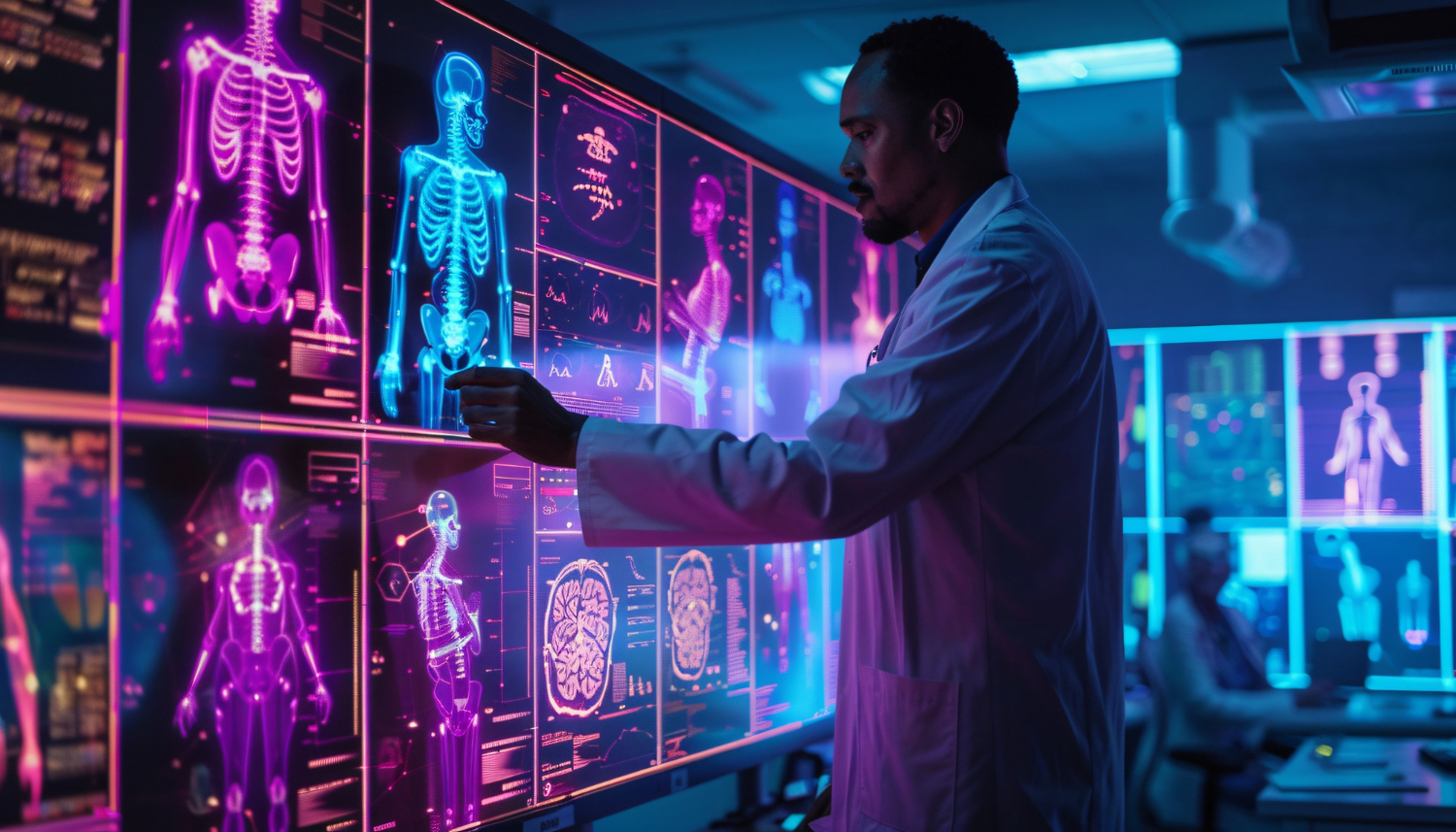The Role of Virtual Reality in Healthcare
Virtual reality (VR) is reshaping healthcare. It creates immersive experiences that change how professionals treat patients and train staff. VR technology is improving care delivery, patient outcomes, and education. With a VR headset, users can access virtual environments designed for healthcare applications.
Here are practical examples of VR in healthcare:
1. Mental Health Treatments
Mental health is one of the biggest areas where virtual reality technologies are making a difference. VR creates immersive environments for treating anxiety, phobias, and post-traumatic stress disorder (PTSD).
Patients wear a VR headset to enter a virtual world where they can confront their fears in a safe, controlled way. Therapists can guide patients through scenarios to reduce anxiety step by step.
Example:
A person afraid of flying can use VR systems to simulate a plane journey. This allows them to practice coping strategies without leaving the comfort of their own homes.
TechnoLynx can help healthcare professionals integrate these VR systems seamlessly into their practices.
2. Pain Management
VR equipment is reducing pain for patients during treatments. Immersive experiences distract patients from pain by transporting them to soothing virtual environments.
For example, children undergoing injections can enter a calming virtual world. They focus on the visuals and sounds, which reduces their perception of pain. Adults undergoing physical therapy also find VR helpful. By engaging in virtual reality VR activities, patients can stay motivated during rehabilitation.
TechnoLynx collaborates with healthcare providers to create an immersive environment for effective pain management solutions.
3. Surgery Training and Simulation
Virtual reality technologies are transforming how surgeons train. VR systems allow surgeons to practice procedures in a virtual environment.
This reduces the need for cadavers or live patients during initial training. Healthcare professionals can develop their skills in a safe, controlled setting before moving to real-life scenarios.
Example:
Using VR, a trainee surgeon can practice complex heart surgery multiple times. This builds confidence and precision.
TechnoLynx works with hospitals to build training environments that improve surgical skills using VR technology.
4. Soft Skills Training for Healthcare Professionals
Healthcare professionals also need excellent communication and empathy skills. VR experiences provide a controlled environment where they can practice soft skills.
For instance, a VR headset can simulate patient interactions, such as breaking bad news or discussing sensitive topics. This helps healthcare workers gain confidence and improve their bedside manner.
TechnoLynx offers solutions that help professionals refine these skills through tailored VR experiences.
5. Physical Therapy and Rehabilitation
Virtual reality (VR) is helping patients recover from injuries faster. It makes physical therapy sessions more engaging and effective.
Patients use VR equipment to perform exercises in a virtual environment. These exercises are often gamified, making them more enjoyable and less repetitive. Patients recover faster because they stay motivated.
Example:
A stroke survivor can practice hand movements by interacting with objects in a virtual world.
TechnoLynx designs VR systems tailored to rehabilitation needs, ensuring therapy remains engaging and productive.
6. Remote Patient Monitoring and Care
Virtual reality technologies allow patients to access care from the comfort of their own homes. VR systems provide immersive healthcare experiences without requiring patients to visit clinics.
Doctors use VR to conduct real-time consultations. Patients use VR headsets to interact in virtual environments. This reduces the strain on healthcare facilities and makes care more accessible.
TechnoLynx supports the development of VR solutions for remote healthcare, ensuring seamless integration with existing systems.
7. Treating PTSD in Veterans
VR experiences are helping veterans suffering from PTSD. Virtual reality VR creates controlled simulations of traumatic scenarios. Patients gradually desensitise themselves to triggers under therapist guidance.
This exposure therapy has shown positive results, offering veterans a safe way to process trauma.
8. Fitness and Wellness
Healthcare professionals are using VR for fitness and wellness programs. Virtual reality technologies encourage patients to exercise by immersing them in virtual worlds.
Patients can engage in activities like cycling through scenic landscapes or playing interactive games. This keeps them active without feeling like they are exercising.
TechnoLynx helps design VR solutions to make fitness programs more engaging and effective.
9. Medical Imaging and Diagnostics
VR technology enables doctors to visualise complex medical data in a 3D format. With VR equipment, they can examine detailed images of organs, tissues, and bones.
This helps doctors plan surgeries and diagnose conditions more accurately. Patients also benefit by understanding their conditions better.
Example:
A cardiologist can use VR to explore a detailed model of a patient’s heart before surgery.
TechnoLynx collaborates with medical facilities to implement VR solutions for better diagnostics.
10. Health Insurance and Patient Education
Health insurance companies are starting to use VR to educate patients. By creating immersive experiences, they can explain complex health plans more clearly.
Patients can also use VR systems to learn about medical procedures, improving their understanding and reducing anxiety.
TechnoLynx provides VR solutions for healthcare companies to enhance patient education and communication.
Read more: Top Virtual Reality Use Cases and Examples
The Role of Computer-Generated Content in Healthcare VR
Computer-generated visuals play a critical role in healthcare VR applications. These visuals create realistic and interactive environments for patients and professionals. Whether it is a simulated surgery room or a calming landscape for pain management, computer-generated imagery ensures precision and engagement.
For instance, during physical therapy, computer-generated environments can replicate real-world scenarios. A patient recovering from an injury might walk through a virtual park, guided by a therapist monitoring their progress in real time. This makes therapy feel more natural and helps patients regain their abilities faster.
In mental health treatments, computer-generated environments enable controlled exposure therapy. Patients can gradually face anxiety-inducing situations in a virtual setting. The flexibility of these environments allows therapists to tailor scenarios to individual needs, improving treatment outcomes.
Computer-generated visuals also assist in training healthcare professionals. A detailed 3D model of the human anatomy rendered with high accuracy helps medical students learn more effectively. Trainees can practice complex procedures in a risk-free, computer-generated operating room.
For health insurance providers, computer-generated simulations make explaining policies simpler. A virtual walkthrough of the claims process or medical procedure helps customers better understand what to expect.
TechnoLynx creates cutting-edge computer-generated content for VR solutions in healthcare. From designing training environments to building patient-focused simulations, our team ensures high-quality outcomes. By leveraging these solutions, healthcare providers can enhance their services and patient satisfaction.
Computer-generated content not only supports innovative treatments but also makes healthcare more accessible and efficient. With continuous advancements, its potential applications in healthcare are limitless.
Why VR is the Future of Healthcare
Virtual reality technologies are helping healthcare professionals in ways that were unimaginable a decade ago. From mental health treatments to surgery training, the applications of VR are vast.
By creating immersive experiences, VR improves outcomes for both patients and doctors. It is transforming how care is delivered and received.
How TechnoLynx Supports VR in Healthcare
At TechnoLynx, we specialise in creating advanced VR solutions tailored to healthcare needs. Our team collaborates with hospitals, clinics, and insurance providers to implement effective VR systems.
We can help design customised virtual environments for mental health, training, diagnostics, and rehabilitation. Our solutions improve care quality, reduce costs, and enhance patient satisfaction.
If your organisation is looking to integrate VR into healthcare, TechnoLynx is ready to help. Together, we can create better healthcare experiences.
Read more about our AR, VR, MR and XR services!
Image credits: Freepik













